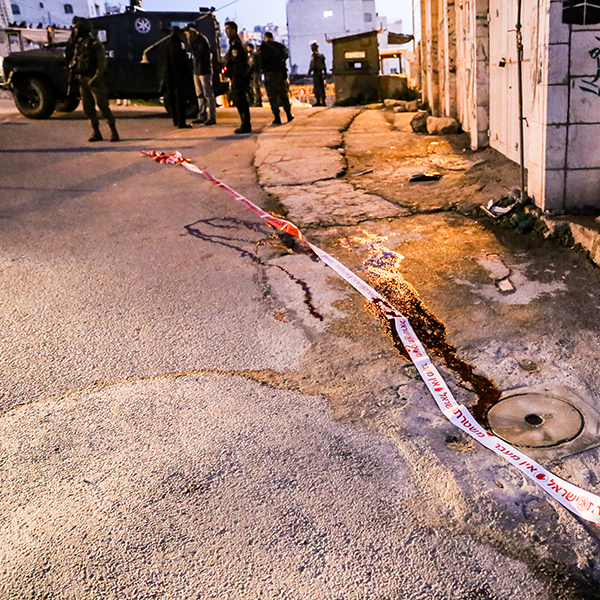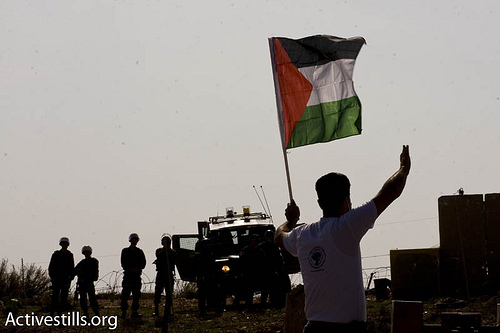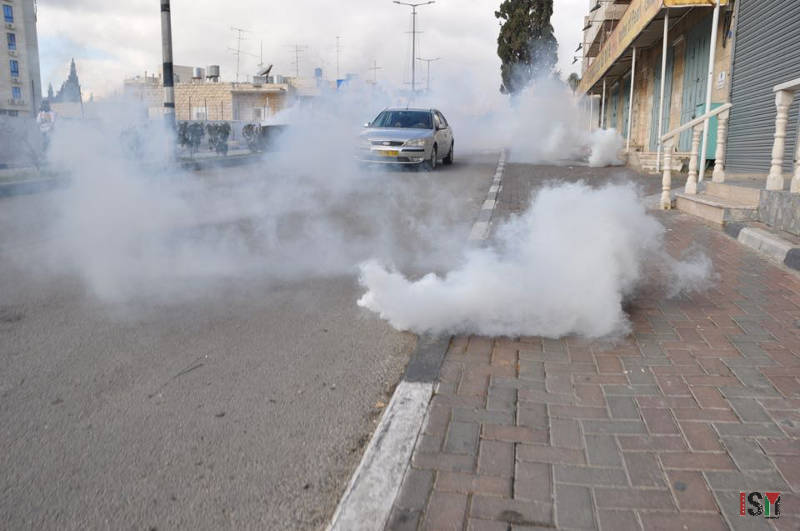Tag: Live Ammunition
-
Children face fear and threat of violence after young woman shot in Hebron
22nd February 2016 | International Solidarity Movement, al-Khalil team | Hebron, occupied Palestine A day after 21-year old Yasmin al-Zarou was gunned down by Israeli forces when passing the Salaymeh checkpoint, many of the children were forced to walk right past where she had layn on the ground bleeding – where her blood is still…
-
11 years of peaceful resistance in Bil’in
February 18th, 2016 | International Solidarity Movement, Ramallah team | Bil’in, occupied Palestine On Friday, February 19th, residents of the village of Bil’in will march to celebrate the 11th aniversary of the beginning of the weekly protest against occupation. The small village of inhabitants has for over a decade united Palestinians and internationals to support…
-
Israeli violence continues as Palestinians protests against the recent killing of Srour Ahmad Abu Srour in Bethlehem.
January 17th 2016 | InternationalSolidarity Movement | Bethlehem, occupied Palestine This Friday, on the 15th of January, hundreds of Palestinians gathered on the main street of Bethlehem to protest against the recent killing of Srour Ahmad Abu Srour, who was killed by Israeli forces in nearby Beit Jala last Wednesday. Israeli forces fired tear gas, rubber-coated…



